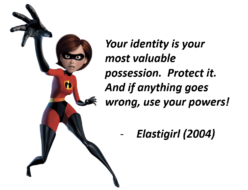Here is a report from The Australian about the issues surrounding Australia's Human Services Access Card. Some of the key points:
“By this time next year, the federal Government hopes to be interviewing and photographing 35,000 Australians each day to create the nation's first ID databank. Biometric photos, matched with names, addresses, dates of birth, signatures, sex, social security status and children's details, would be loaded into a new centralised database. Welfare bureaucrats, ASIO, the Australian Federal Police and possibly even the Australian Taxation Office would have some form of access to the unprecedented collection of identity data.
“Within three years, all Australians seeking benefits such as Medicare, pensions, childcare subsidies, family payments, unemployment or disability allowances – about 16.5 million people – would have joined the databank. They would be given a photographic access card to prove who they are and show their eligibility for social security.
“This week, however, the billion-dollar project hit a bump when Human Services Minister Chris Ellison revealed that legislation due to go before federal Parliament this month had been delayed…
“How will Australians’ privacy be protected? How will the database and cards be kept secure? Who can see information on the card? What identity documents will Australians need to acquire a card, and what will happen to the estimated 600,000 people without a birth certificate, passport or driver's licence?
“The Government's mantra is that this is not an ID card because it does not have to be carried, but users will have to show it to prove their identity when claiming welfare benefits…
“The Government claims the new system will stem between $1.6 billion and $3 billion in welfare fraud over the next decade…
“A key Government adviser, Allan Fels – a former chairman of the Australian Competition and Consumer Commission and now head of the Government's Access Card Consumer and Privacy Taskforce – is at loggerheads with Medicare, Centrelink and the AFP, who all want the new card to display the user's identification number, photograph and signature…
“The photo would be stored in a central database, as well as in a microchip that could be read by 50,000 terminals in government offices, doctors’ surgeries and pharmacies…
“Despite his official role as the citizens’ watchdog, Fels still has not seen the draft bill…
“‘The law should be specific about what is on the card, in the chip and in the database,’ he says. ‘If anyone in future wants to change that they would have to do nothing less than get an act of parliament through. We don't want a situation where, just by administrative decisions, changes can be made…’
“‘There will be no mega-database created that will record a customer's dealings with different agencies,” the minister [Ellison] told the conference…
“Cardholders may be able to include sensitive personal information – such as their blood type, emergency contacts, allergies or illnesses such as AIDS or epilepsy – in the one-third of the microchip space that will be reserved for personal use. It is not yet clear who would have access to this private zone.
“Hansard transcripts of Senate committee hearings into the access card legislation reveal that police, spies and perhaps even the taxman will be able to glean details from the new database. The Department of Human Services admits the AFP will be able to obtain and use information from the databank and card chip to respond to threats of killing or injury, to identify disaster victims, investigate missing persons, or to ‘enforce criminal law or for the protection of the public revenue’.
“Australia's super-secretive spy agency, the Defence Signals Directorate, will test security for the new access card system…
“The Australian Privacy Foundation's no-ID-card campaign director, Anna Johnston, fears future governments could “misuse and abuse” the biometric databank…
(Full story…)
ID Cards can be deployed in ways that increase, rather than decrease, the privacy of citizens, while still achieving the goals of fraud reduction. It's a matter of taking advantage of new card and crypto technologies. My view is that politicians would be well advised in funding such products rather than massive centralized databases.
As for the Defense Signals Directorate's access to identity data, what has this got to do with databases offering generalized access to every curious official? You would think they were without other means.



